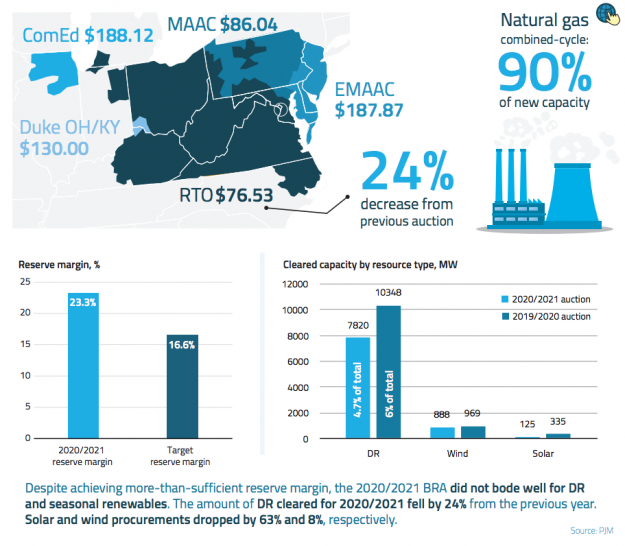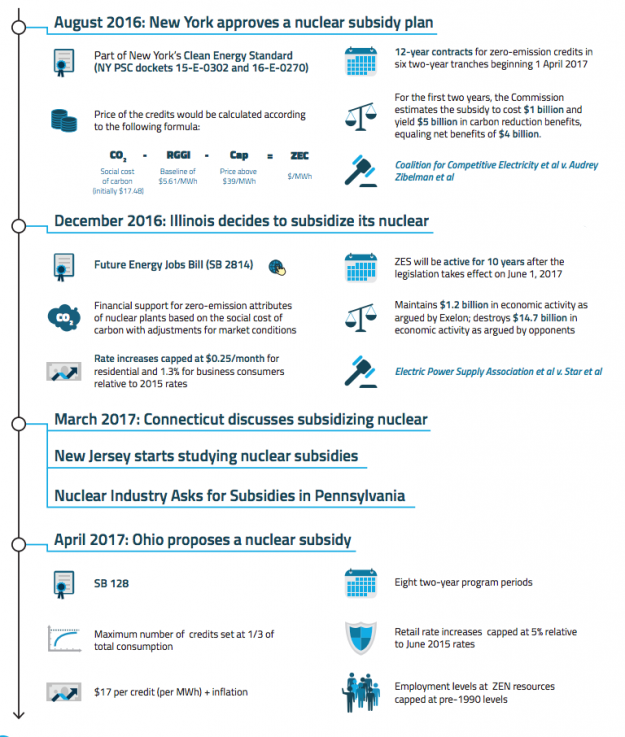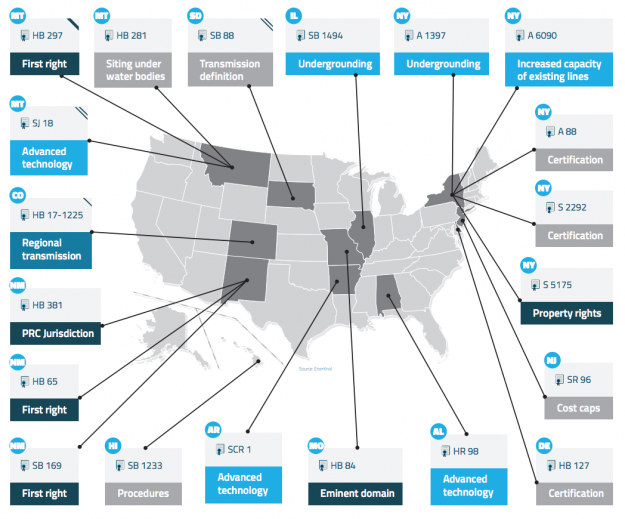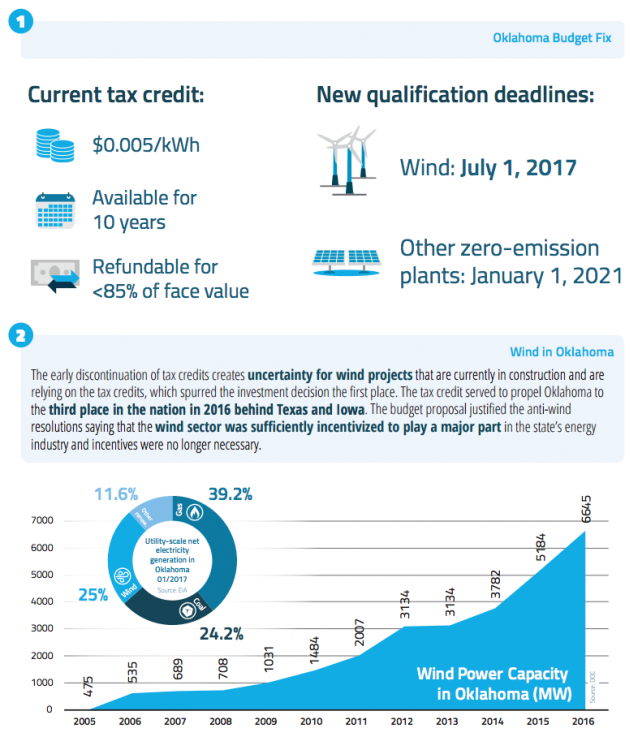EnerKnol’s Visual Primer – Prices Fall in PJM’s 100-Percent Capacity Resource Auction
PJM’s 2017 capacity auction – the first one to apply the 100-percent Capacity Performance requirement – yielded a clearing price of $76.53/megawatt-day in most of PJM, about 24 percent lower than last year. Cleared capacity of seasonal resources like demand response, solar, and wind fell largely due to the new year-round performance requirement. Lower prices are attributed largely to lower natural-gas prices, lower demand forecasts, and new combined-cycle natural gas units clearing capacity in the auction.




